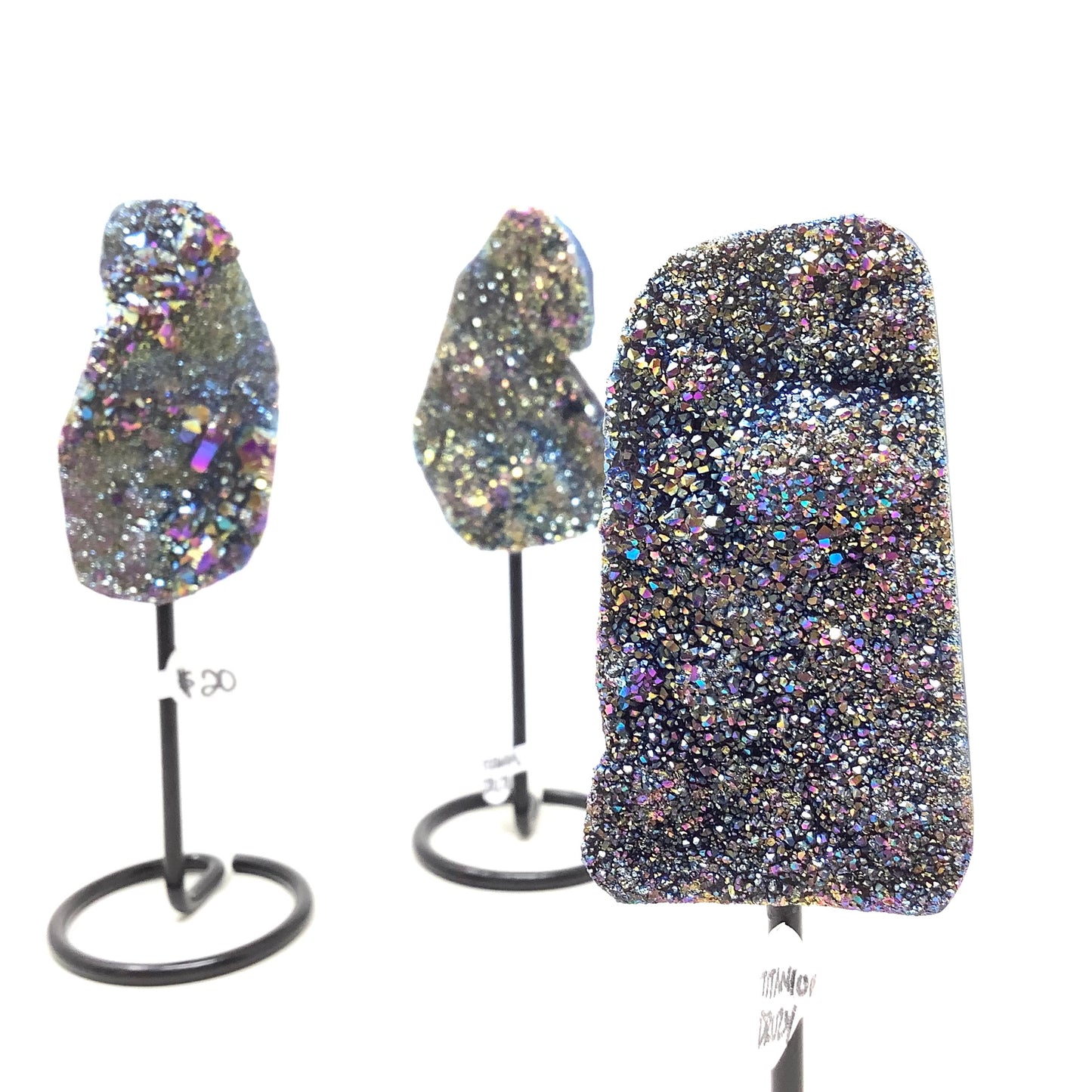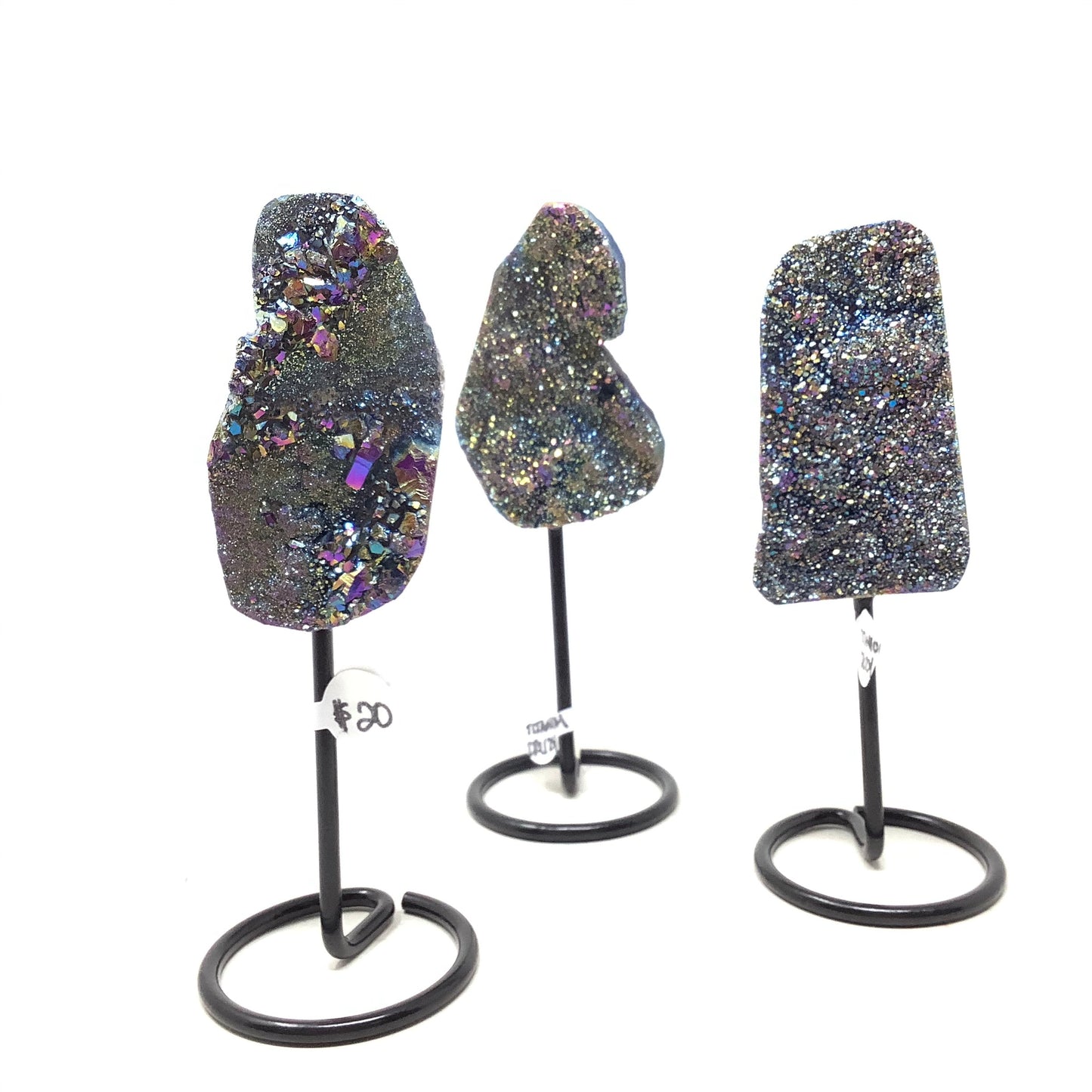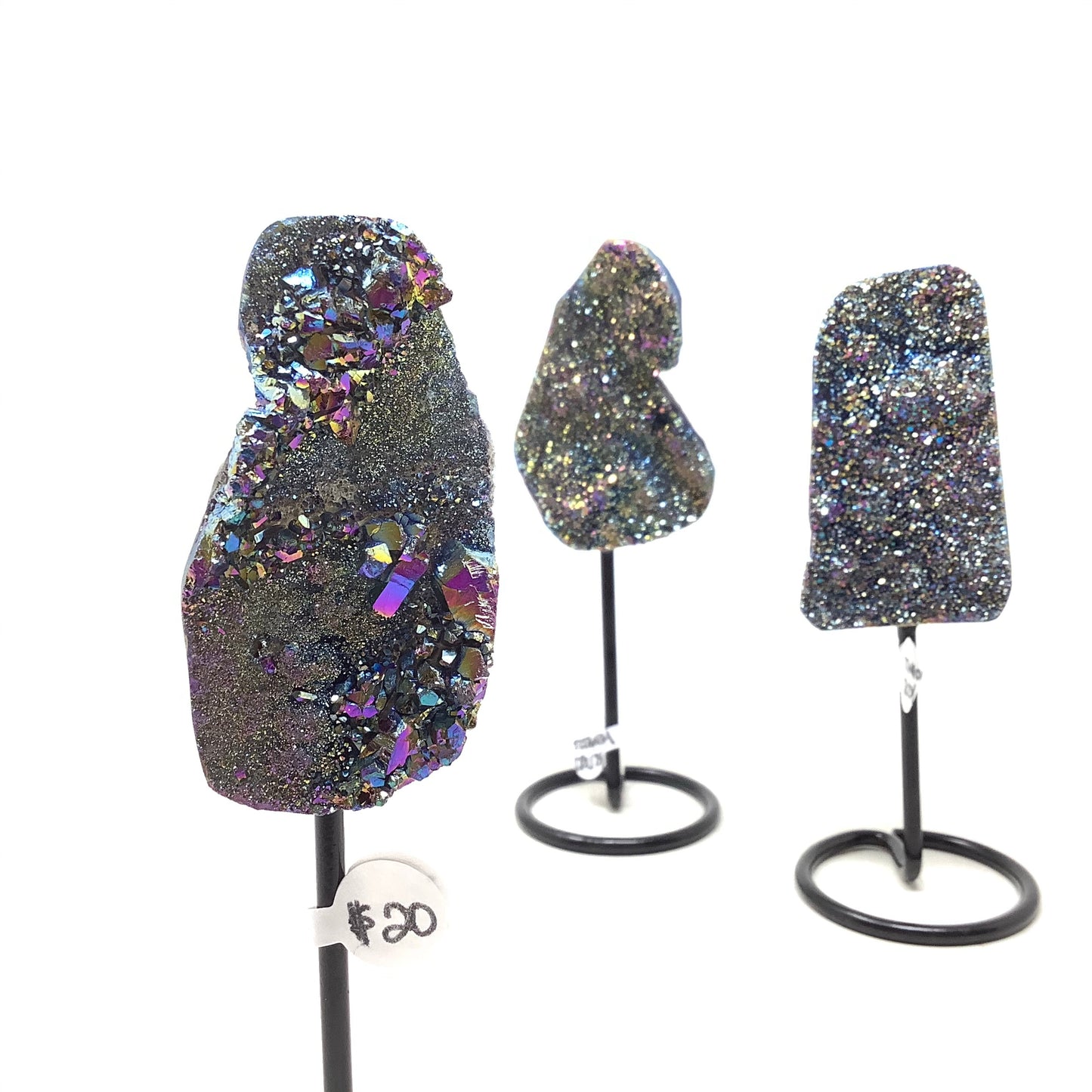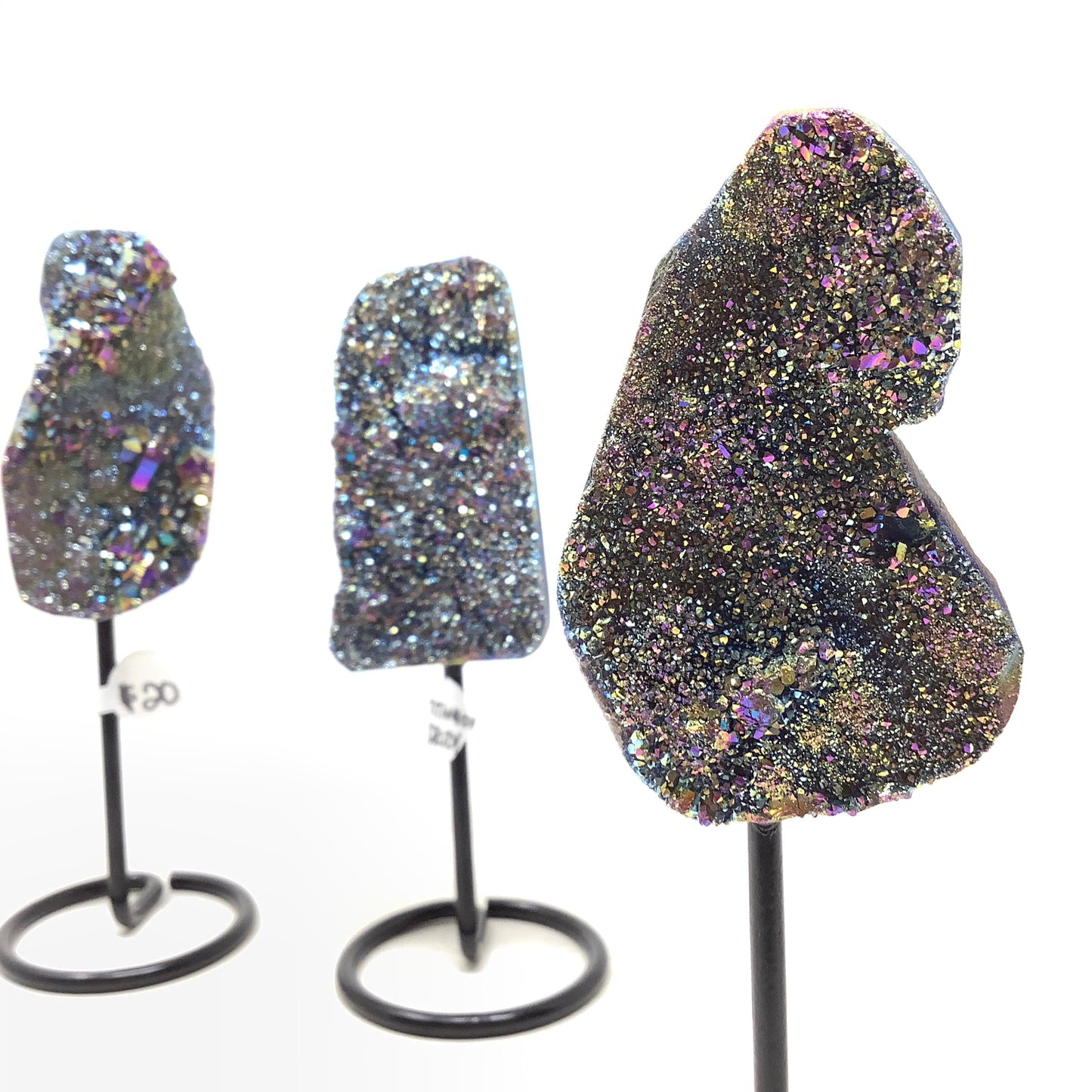Adirondack Artworks
Titanium Druzy Specimen
Titanium Druzy Specimen
Couldn't load pickup availability
Titanium druzy specimen on a metal stand.
Approximate Height: 4.5 inches
The geological process that forms a druzy, the layer of crystals on the rock, occurs when water brings minerals onto a rock's surface. When the water evaporates, cooling occurs and the minerals are left behind to form crystals on top of the rock. Depending on the minerals, druzy gemstones can be almost any color of the rainbow, including white, pink, blue, purple, green or black.
Most druse forms as cavity lining in geodes. The botryoidal agate mass of the geodes are irregular, lumpy like a cluster of grapes. As a result, typically the surface area for cutting a cab is small. Large stones are less common. Many cutters keep a border of plain agate around the druse covered area of the cab to produce larger cabs.
...
The druzy is then heated to 871 °C (1600 °F) in a vacuum, and then gold vapor is added to the chamber. The gold atoms fuse to the crystal's surface, which gives the crystal an iridescent metallic sheen.
🔳
🔳
Share







